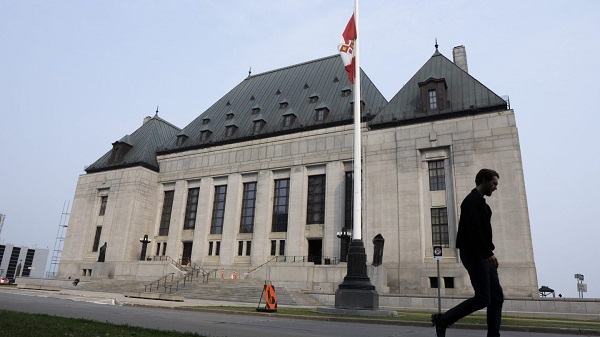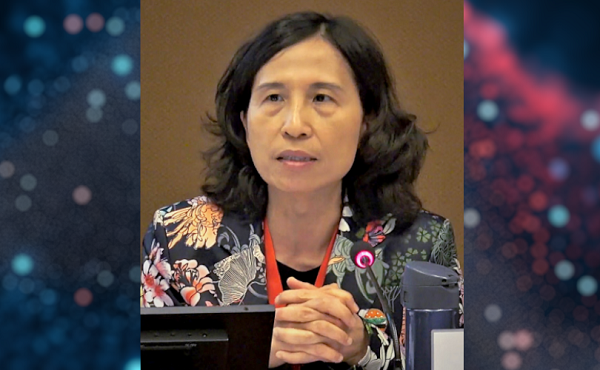Alberta
‘Canada should be bold and more intentional…and respond to a world thirsty for more Canadian-made energy, food and critical minerals’

From the Canadian Energy Centre
Bare minimum amendments to Impact Assessment Act ‘do little’ to address Supreme Court’s concerns
One year ago, the Supreme Court of Canada found the federal government’s law to assess major projects like pipelines and highways breaks the rules of the Canadian constitution.
There’s a good chance it still does, despite amendments enacted this spring.
Lawyers with firms including Osler, Hoskin & Harcourt, Bennett Jones and Fasken have warned that Ottawa’s changes to the Impact Assessment Act (IAA) leave it open to further constitutional challenges.
One could come from Alberta as soon as November 1, following a four-week deadline set by Premier Danielle Smith for the federal government to address the province’s concerns.
“I don’t think that the amendments have responded adequately to the Supreme Court of Canada’s decision,” says Brad Gilmour, a partner at Osler, Hoskin & Harcourt who co-argued Alberta’s successful 2023 reference case to the Supreme Court.
The governments of Ontario, British Columbia, Saskatchewan, Quebec, Newfoundland and Labrador, New Brunswick and Manitoba supported Alberta’s case, arguing that the IAA had exceeded federal jurisdiction.
The Supreme Court largely agreed, while allowing that there is a place for federal assessment of major projects.
“The court had some significant concerns about federal overreach into areas of provincial jurisdiction, and I think that the amendments have done really little to address that broad concern,” Gilmour says.
“They’ve made very minor changes to the sections that the courts found to be unconstitutional, and the wording they use lacks clarity and lacks certainty.”
Components of the IAA that the Supreme Court found unconstitutional include the decision that starts the process – whether a project requires a federal impact assessment and the decision at its conclusion – whether or not a project should receive final approval to proceed.
“It appears the government has done the minimum possible to address the Supreme Court’s concerns, adding qualifiers to its areas of authority, but failing to correct the legislation’s negative impacts on the pace, cost and efficiency of project approvals,” wrote the Business Council of Canada’s Michael Gullo and Heather Exner-Pirot.
“Canada can’t wait and should be bold and more intentional in its effort to grow market share and respond to a world thirsty for more Canadian-made energy, food and critical minerals.”
According to Gullo and Exner-Pirot, the negative impact of the IAA legislation, which came into effect in 2019, can be seen in Canada’s national inventory of major resource projects.
In 2015, there were 88 energy projects completed with a value of $53 billion. In 2023, that figure halved to 56 completed projects with a value of $26 billion.
Alberta’s government says it has “made repeated requests” for the federal government to consult with the province on the amendments, to no effect.
“Alberta is not taking their foot off the pedal in pushing back,” Exner-Pirot told CEC.
“Our country’s energy and natural resources cannot be developed in a timely and economic manner under the current federal regulatory regime. This is affecting not only the economy, but also our security and our efforts to move to lower emitting energy sources.”
Alberta
Alberta government records $8.3 billion surplus—but the good times may soon end

From the Fraser Institute
By Tegan Hill
According to last week’s fiscal update, the Smith government recorded a $8.3 billion surplus in 2024/25—$8 billion more than what the government projected in its original 2024 budget. But the good times won’t last forever.
Due largely to population growth, personal income tax revenue exceeded budget projections by $500 million. Business tax revenue exceeded budget expectations by $1.1 billion. And critically, thanks to relatively strong oil prices, resource revenue (e.g. oil and gas royalties) saw a $4.7 billion jump.
The large budget surplus is good news, particularly as it will be used to pay down government debt (which taxpayers must ultimately finance) and to invest for the future. But again, the good times could soon be over.
Recall, the Alberta government incurred a $17.0 billion budget deficit just a few years ago in 2020/21. And it wasn’t only due to COVID—until the recent string of surpluses, the government ran deficits almost every year since 2008/09, racking up significant amounts of debt, which still largely persists today. As a result, provincial government debt interest payments cost each Albertan $658 in 2024/25. Moreover, in February’s budget, the Smith government projected more deficits over the next three years.
Generally, Alberta’s fiscal fortunes follow the price of oil. Over the past decade, for example, resource revenue has been as low as $2.8 billion in 2015/16, while oil prices slumped to $US45.00 per barrel, and as high as $25.2 billion in 2022/23, when oil prices jumped to $US89.69 per barrel.
Put simply, resource revenue volatility fuels Alberta’s boom-and-bust cycle. In 2025/26, the West Texas Intermediate oil price will be a projected $US68.00 per barrel with projected resource revenue falling by $4.9 billion year-over-year.
But oil prices don’t need to dictate Alberta’s fiscal fortune. Indeed, if the Smith government restrains its spending, it can avoid deficits even when resource revenues fall.
There are plenty of ways to rein in spending. For instance, the government spends billions of dollars in subsidies (a.k.a. corporate welfare) to select industries and businesses in Alberta every year despite a significant body of research that shows these subsidies fail to generate widespread economic benefit. Eliminating these subsidies is a clear first step to deliver significant savings.
The budget surplus is undoubtedly positive for Albertans, but the good times could soon come to an end. To avoid deficits and debt accumulation moving forward, the Smith government should rein in spending.
Alberta
Alberta Provincial Police – New chief of Independent Agency Police Service

Sat Parhar has been appointed as the first chief of the Independent Agency Police Service, marking the next step toward a new municipal policing option.
The appointment of a new chief for the Independent Agency Police Service (IAPS) marks the next step in giving municipalities a new option for local policing and builds on the work already underway for the agency to assume the police-like duties currently carried out by the Alberta Sheriffs. The IAPS will empower municipalities to adopt strategies that effectively respond to their specific safety concerns, enhancing public safety across the province.
Chief Parhar brings more than 25 years of policing experience, including senior roles with the Calgary Police Service, most recently as deputy chief. His frontline policing experience and deep understanding of Alberta’s complex and diverse public safety landscape positions him to lead the agency as it takes shape and begins its work as a new municipal policing option, keeping communities safe.
Once operational, the agency will strengthen Alberta’s existing policing model and complement the province’s current police services, which includes the RCMP, Indigenous policing services and municipal police. It will help fill gaps and ensure law enforcement resources are deployed efficiently to meet Alberta’s evolving public safety needs and improve law enforcement response times, particularly in rural communities.
“Appointing Chief Sat Parhar is a key milestone in Alberta’s plan to give municipalities a real choice in how their communities are kept safe. This is about building a modern police service that reflects the priorities of Albertans, strengthens local decision-making, and ensures every corner of our province, especially rural areas, can count on responsive, effective law enforcement. With his decades of experience and deep understanding of Alberta’s policing landscape, he is the right leader to bring this vision to life.”
“This appointment signifies a significant step forward in our efforts to establish a more robust, community-focused policing model that is better equipped to meet the unique needs of our local residents. Under Chief Parhar’s visionary leadership, we are confident that we will develop a modern, efficient police service that not only enhances public safety but also aligns closely with the priorities and values of Albertans. His experience and commitment are vital in shaping an IAPS that is responsive, transparent, and dedicated to fostering trust and collaboration within the community, ultimately ensuring a safer and more connected society for all.”
Chief Parhar’s immediate priorities will be to hire an executive team and commence organizational planning such as developing key recruitment, training and other operational policies. Chief Parhar’s appointment is the first step of many to establishing the IAPS.
“It’s an honour to take on this role and help shape a modern police service built for Alberta. My focus from day one will be on setting high standards for professionalism, building strong relationships with our partners and ensuring this service reflects the needs and priorities of the communities we serve.”
The Independent Agency Police Service was formally created through regulation following the passing of Public Safety Statutes Amendment Act, 2024. The agency will operate as an independent Crown corporation, and will be renamed the Alberta Sheriffs Police Service, with its head office located in Calgary. The IAPS will be operationally independent from the provincial government with civilian oversight, consistent with all police services in Alberta.
“When it comes to policing, municipalities like ours deserve a choice – especially when the current system leaves us disadvantaged simply because of our size. We look forward to learning more about what that alternative will look like once an Alberta police agency is fully established and the options are clear. For us, this is about fairness, sustainability, and ensuring municipalities have access to policing solutions that reflect both their needs and their realities.”
Quick facts
- The regulation establishes the IAPS Provincial Corporation and its governance structure including board of directors, board of director powers, financial responsibilities and accountabilities.
Related news
- Expanding municipal police service options (April 7, 2024)
-

 Opinion1 day ago
Opinion1 day agoBlind to the Left: Canada’s Counter-Extremism Failure Leaves Neo-Marxist and Islamist Threats Unchecked
-

 Business2 days ago
Business2 days agoWhy it’s time to repeal the oil tanker ban on B.C.’s north coast
-

 Alberta1 day ago
Alberta1 day agoAlberta Provincial Police – New chief of Independent Agency Police Service
-

 Alberta2 days ago
Alberta2 days agoPierre Poilievre – Per Capita, Hardisty, Alberta Is the Most Important Little Town In Canada
-

 COVID-191 day ago
COVID-191 day agoTop COVID doctor given one of Canada’s highest honors
-

 Business2 days ago
Business2 days agoLatest shakedown attempt by Canada Post underscores need for privatization
-

 Agriculture9 hours ago
Agriculture9 hours agoCanada’s supply management system is failing consumers
-

 MxM News2 days ago
MxM News2 days agoUPenn strips Lia Thomas of women’s swimming titles after Title IX investigation


